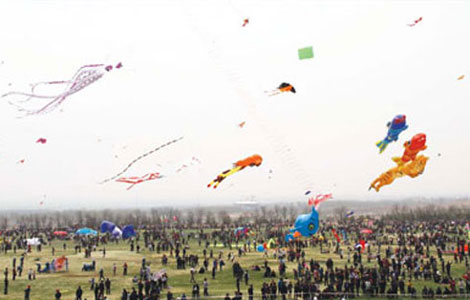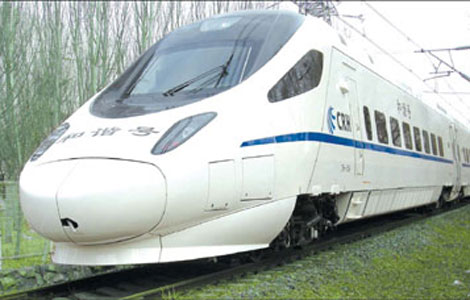Asia
With 12,000 still missing, Japan keeps searching
Updated: 2011-04-25 21:59
(Agencies)
SHICHIGAHAMAMACHI, Japan - A line of somber soldiers walked methodically through a drained swamp Monday, with each step sinking their slender poles into the muck beneath.
If one hit a body, he would know.
"Bodies feel very distinctive," said Michihiro Ose, a spokesman for the Japanese army's 22nd infantry regiment.
The men were among 25,000 troops given the morbid duty of searching the rubble, the seas and the swamps of northeastern Japan for the bodies of the nearly 12,000 people still missing in last month's earthquake and tsunami.
The two-day operation was the biggest military search since the March 11 disaster. With waters receding, officials hoped the troops, backed by police, coast guard and US forces, would make significant progress. By Monday evening, they had found 38 bodies, the military said.
In the town of Shichigahamamachi, about two dozen Japanese soldiers in black boots, white masks and waterproof jumpsuits traveled silently in unison across the soggy earth, made even softer by torrential rains an hour earlier. In some areas, the mud came up to their knees.
The search focused on a long, narrow marsh drained in recent weeks by the army using special pump trucks.
Once the soldiers reached the end of the marsh, they turned around and walked back. And then back again.
"It's important not to miss anything," Ose said as he watched the soldiers nearly camouflaged by the dark gray mud. "As long as there is time left in the day, we will keep going up and down."
In another part of town, several dozen soldiers cleared mountains of rubble by hand from a waterfront neighborhood filled with gutted and teetering houses. Four people in the neighborhood were missing, said 67-year-old Sannojo Watanabe.
"That was my house right there," he said, pointing to a foundation with nothing atop it.
He surveyed the neighborhood: "There's nothing left here."
A total of 24,800 soldiers - backed by 90 helicopters and planes - were sent to comb through the rubble for buried remains, while 50 boats and 100 navy divers searched the waters up to 12 miles (20 kilometers) off the coast to find those swept out to sea.
The search is far more difficult than that for earthquake victims, who would mostly be under rubble. The tsunami could have left the victims anywhere.
"We just don't know where the bodies are," Ose said.
In all, 370 troops from the 22nd infantry regiment looked for a dozen people still missing from Shichigahamamachi. The regiment had been searching the area with a far smaller contingent, but tripled the number of troops for the two-day intense search, said Col. Akira Kunitomo, the regimental commander.
Bodies found so many weeks after the disaster are likely to be unrecognizable, black and swollen, Ose said.
"We wouldn't even know if they would be male or female," he said.
The work is personal for the unit. More than half its 900 troops hail from Miyagi prefecture, which was hit hard by the tsunami, and nearly all are from northern Japan. It lost one of its own to the tsunami - a soldier in his 30s who was on break but tried in vain to rush back to camp after the earthquake.
More than 14,300 people have been confirmed dead and nearly 11,900 remain missing. The military's first major sweep for bodies uncovered 339; its second turned up 99 more, Defense Ministry spokesman Norikazu Muratani said. The vast majority of those have been recovered by the 22nd regiment.
After the 2004 Indian Ocean tsunami, bodies turned up along the Indonesian coast for months afterward. However, 37,000 of the 164,000 people who died in Indonesia simply disappeared, their bodies presumably washed out to sea.
Last week, two undersea robots provided by the nonprofit International Rescue Systems Institute conducted five-day searches in waters near three tsunami-hit towns. They found cars, homes and other wreckage, but no bodies, said Mika Murata, an official with the institute.
The Japanese government has come under criticism for its response to the disasters and a subsequent nuclear crisis.
On Monday, Goshi Hosono, an adviser to Prime Minister Naoto Kan and member of his nuclear crisis management task force, slammed the operator of the crippled Fukushima Dai-ichi nuclear plant, Tokyo Electric Power Co., for its handling of the crisis.
The plant was not properly prepared for the tsunami or for the loss of power that followed, he said. And TEPCO delayed the crucial venting of radioactive steam that built up immense pressure and may have contributed to hydrogen explosions that made the crisis even worse, he said. All those issues are being investigated, he said.
"I think TEPCO is used to its routine work as a supplier of electricity, but it was not good at handling something different," he said.
TEPCO announced a roadmap last week to bring the plant into cold shutdown within six to nine months, a crucial step for allowing the tens of thousands evacuated from a 12-mile (20-kilometer) area around the plant to return home.
Hosono said the situation at the plant remained "extremely difficult," with radioactivity high in some areas and the transfer of contaminated water proving very tough. Though work is slower than hoped for, Hosono said he saw no reason it would not be completed along the road map's timetable.
Meanwhile, the government was discussing how much of the compensation for the nuclear crisis it would bear and how much would be paid by TEPCO.
With its liability likely to stretch into the billions, TEPCO announced Monday it would slash executive compensation by 50 percent, cut managers' salaries by 25 percent and low-level employees would get a 20 percent pay cut. It also planned to freeze hiring for next year. The amount saved would total 54 billion yen ($660 million) for the year, the company said.
E-paper

Blowing in the wind
High-Flyers from around the world recently traveled to home of the kite for a very special event.
Image maker
Changing fortunes
Two motherlands
Specials

Models gear up car sales
Beauty helps steer buyers as market accelerates.

Urban breathing space
City park at heart of Changchun positions itself as top tourism attraction

On a roll
Auto hub Changchun also sets its sight on taking lead in railway sector
